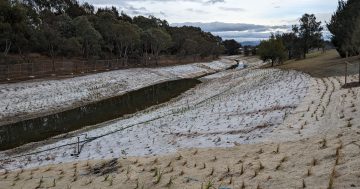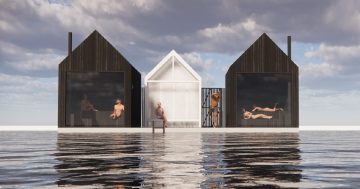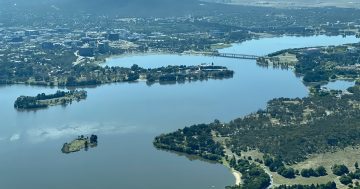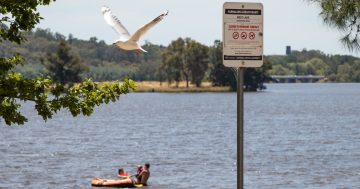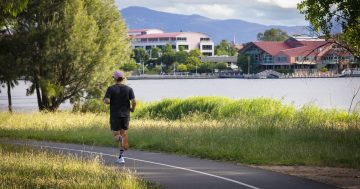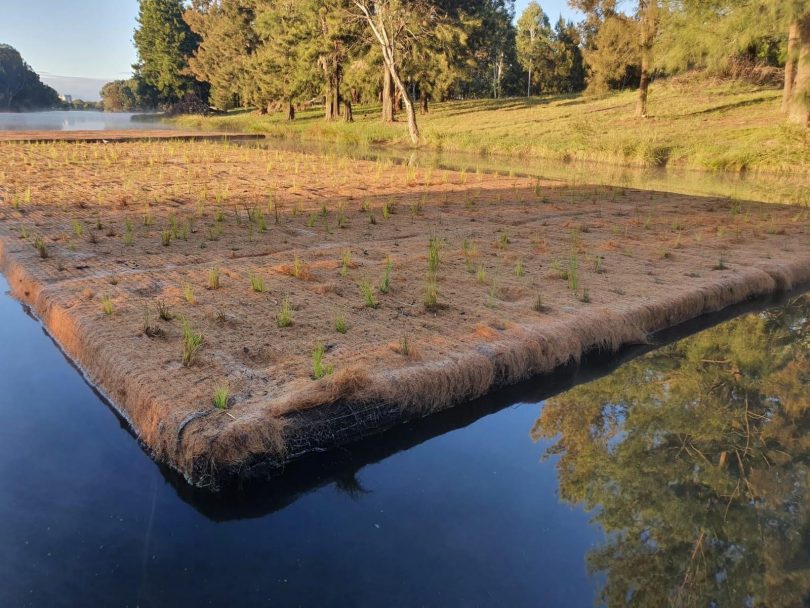
The Tuggeranong floating wetlands will need to be moved after the recent spate of wet weather. Photo: ACT Government.
The trial of floating wetlands in Lake Tuggeranong, which were intended to help address recurring algae problems, has hit a bump in the road (so to speak).
Recent wet weather and wild storms have caused the 500 square metres of wetlands to dislodge from their bearings, so they will need to be repositioned.
The wetlands are part of a two-year trial funded by the ACT Government through the ACT Healthy Waterways program.
Initially, the wetlands were strategically installed at the inlet where Village Creek enters the lake – a spot previously identified as an algae-producing haven.
It was hoped the wetlands would compete directly with algae for both light and nutrients and stop algal blooms from being formed in the bay so they couldn’t then wash into the lake.
Unfortunately, although the bay is generally quiet, recent storms meant the water became turbulent and water levels simply became too high, program manager Dr Ralph Odgento explained.
“We thought good anchors to both banks and long tethers would allow us to overcome these problems as the wetlands could float above it all. But, in the first storm a few months ago, one side of the anchors actually ripped out of the banks,” he said.
So the team acquired better anchors and re-anchored the wetland to the bottom of the lake instead of the bank.
This didn’t work either.
“The anchors didn’t fail, but the wetlands were just buffeted in the turbulent flows of the water.
“The flows were just too much for the wetlands – one ended up on top of the other,” he said.
Despite the setbacks, it’s not the end of the trial. The wetlands will most likely be moved to a quieter location in the lake.
“We haven’t decided exactly where yet, but we need to find a less turbulent environment for them,” Dr Odgento said.
It might also mean they aren’t as effective as originally hoped.
While they will still work indirectly by lowering the overall nutrient level in the lake, they won’t be able to work in the bay where they could directly compete with algae for light and nutrients.
Lake Tuggeranong has long been plagued by hazardous algal blooms, particularly in the warmer months. This means the lake is often not safe for swimming, water sports, or other activities.
Dr Odgento, however, is realistic about the impact the wetlands can have on the lake’s overall water quality.
“They are a very good water-quality asset, but they on their own would not be able to intercept enough nutrients to prevent algal blooms in Lake Tuggeranong,” he explained.
There’s also the issue of the plants on the wetlands needing to grow before they can be fully effective.
“They are, however, one piece of the puzzle to mitigating the algal blooms in the lake,” Dr Odgento explained.
While measuring the success of the floating wetlands is also a challenge, Dr Odgento is hopeful he and his team will be able to find a way to do so before the trial comes to an end.












